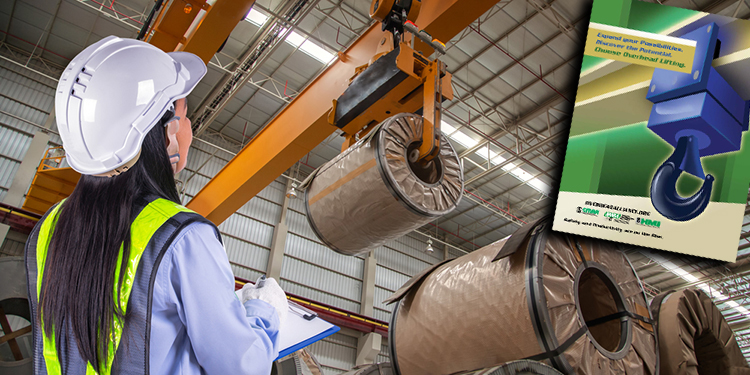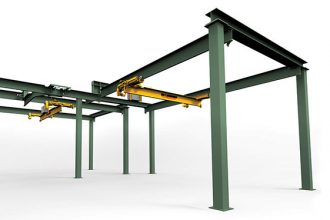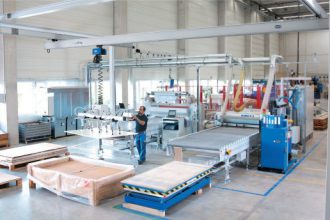How Overhead Lifting Equipment Optimizes Industrial Space And Improves Workflow

This is the seventh in a series of posts detailing 13 reasons why overhead lifting and handling technologies — specifically cranes, hoists, and monorails — can improve a manufacturing or distribution operation’s efficiency, productivity, safety, and sustainability. Read more in the free Overhead Alliance publication, “Expand Your Possibilities. Discover the Potential. Choose Overhead Lifting.”
Facility rents are rising and available industrial space is increasingly limited, according to a recent report from global real estate services provider Jones Lang LaSalle (JLL). Industrial properties experienced their seventh consecutive quarter of limited vacancy in the third quarter of 2022, hitting a record low of 3.3%. That low availability boosted rents to an average of $8.45 per square foot, a 25% increase year-over-year. What’s a manufacturing or distribution operation that’s short on space to do? Consider adding overhead lifting equipment to optimize an existing structure’s available square footage while simultaneously improving workflow.
Optimize Available Space
Adding overhead lifting equipment such as cranes, hoists, and monorails enables an operation to use more of the cubic capacity of their building. In high-ceilinged buildings, overhead areas are often beyond the reach of floor-based transport and placement equipment. By deploying overhead lifting equipment, an operation can achieve both spatial and throughput gains by accessing vertical areas within their current facility.
For example, integrating overhead lifting solutions into the ceiling structure of a facility enables operators to lift loads to higher elevations. This enables them to achieve higher stacking heights. The result? More efficient usage of vertical space and optimization of an existing facility’s volumetric capacity. This increased access creates more storage space, enabling the current building footprint to hold more products. Facility owners gain additional usable square footage without the need to lease more space, expand the current operation’s footprint, or acquire additional buildings or property to gain more usable square footage.
Improve Workflow
Overhead lifting equipment efficiently transports a load in a straight path from one location to another. Unlike floor-based load handling equipment, cranes, monorails, and hoists do not need to spend time carefully navigating through or around aisles, columns, equipment, and other obstacles. By comparison, this direct-path movement saves transport time, improving workflow and increasing operational efficiency. It also reduces the risk of product damage.
Further, as a single operator controls and directs the operation of overhead lifting equipment. This frees up workers previously dedicated to operating and maneuvering floor-based load transport equipment. Instead, they can perform other, more value-added tasks for an additional boost in workflow and efficiency.
Overhead Lifting Equipment Also Benefits Low-Ceiling Operations
Buildings with high ceilings aren’t the only ones that benefit from the installation of overhead lifting equipment. Workstation and jib cranes optimize space and improve workflow in facilities with low ceilings as well. These smaller structures help operators quickly and efficiently raise, manipulate, position, and place items without experiencing ergonomic stress. They also reduce the need for floor-based load handling equipment. That, in turn, cuts the risk of a motorized transport vehicle impacting structures or other workers.
Looking for more efficiency, productivity, and cost savings benefits offered by overhead handling systems?
To learn more, download the free publication, “Expand Your Possibilities. Discover the Potential. Choose Overhead Lifting,” from MHI’s Overhead Alliance (comprised of the Crane Manufacturers Association of America (CMAA), the Hoist Manufacturers Institute (HMI), and the Monorail Manufacturers Association (MMA)).



